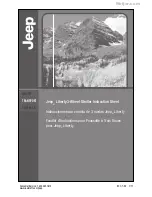
Remote Control Console
48
6.3 FEATURE DESCRIPTION
6.3.1 CROSSMUTE
The Crossmute function provides muting of the receive audio paths on consoles in the same room as a
transmitting console. This is to prevent audio feedback.
Audio feedback occurs when the microphone audio from one console appears on the speaker of a parallel
console in the same room. If the speaker is within audio distance of the microphone an audio loop will be
formed and a loud squeal will be produced on the speaker.
TLM’s offer both logic level and tone based Crossmute schemes. In the Logic Crossmute a wire connection
is made between each of the consoles to be crossmuted. This method allows different makes and models of
consoles to be integrated into the same system. The tone based Crossmute uses DTMF tones before and
after the transmission. This method has the advantage that no wiring must be made. It has the
disadvantage that parallel consoles hear the DTMF beep. Note that the tone based Crossmute uses DTMF
digits in the A through D range. These must not be used for signaling in a system using tone based
Crossmute. Logic and tone based Crossmute functions are independent of each other. Either one, both, or
neither may be used.
6.3.1.1 LOGIC CROSSMUTE
Feedback may be avoided by muting the receive audio of the line card which is in parallel with a transmitting
line card. This may be accomplished by connecting pins 1 and 8 of each of the consoles to be crossmuted
as shown above. Pin 8 must be connected to provide a common ground. The figure shown illustrates a
setup where consoles 1 through 3 are in the same room and, when one transmits, the others will mute the
receive audio from that one line. Console 4 is offsite with no possibility of feedback, and, therefore, is not
hardware crossmuted. Note: The intercom function will not work between crossmuted consoles.
Logic Crossmute is enabled and disabled by JP6 on the TLM card. To enable logic Crossmute place JP6 in
the A position. To disable logic Crossmute place JP6 in the B position. JP6 is checked by the
microprocessor on power up. Any changes after power up will not be registered.
6.3.1.2 TONE BASED CROSSMUTE
A second method of crossmuting consoles is the tone method. In the tone based crossmute a DTMF “C
plus *” characters are transmitted before each transmission and a DTMF “D” character is transmitted at the
end of each transmission. To use this feature the system administrator must make sure these digits are not
used elsewhere in the system as muting may occur when these digits are decoded at the TLM.
Tone based crossmuting may be independently enabled and disabled on the touchscreen in the line-
programming mode. See the Programming manual for instructions on how to enable and disable the tone
based crossmute.
6.3.2 E&M RELAY CONTACT CLOSURE/ LOCAL CONTROL
The TLM provides a dry contact closure during PTT functions between pins 2 and 7 of the line jack. The
relay closure can carry 500mA at 12VDC or 250mA at 115VAC. The relay is not activated during intercom
functions. The relay is normally open. If this relay closure is used for local control (or any other case where
tone bursts are not used for signaling) moving JP7 to the B position may disable the tone burst generator.
1 2 3 4 5 6 7 8
1 2 3 4 5 6 7 8
1 2 3 4 5 6 7 8
1 2 3 4 5 6 7 8
Console 1:
TLM 1
Console 2:
TLM 1
Console 3:
TLM 1
Offsite
Console 4:
TLM 1
Line +
Line -
Line jack
Line jack
Line jack
Line jack
















































